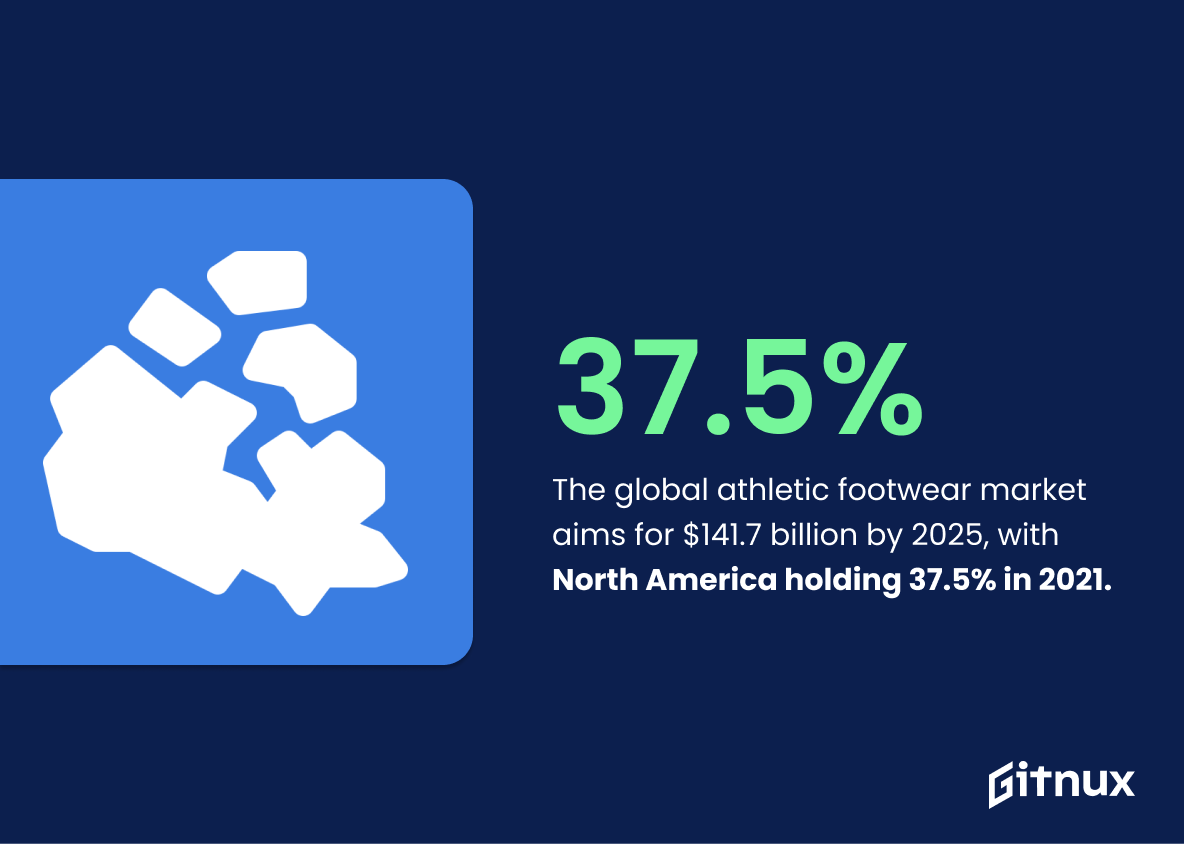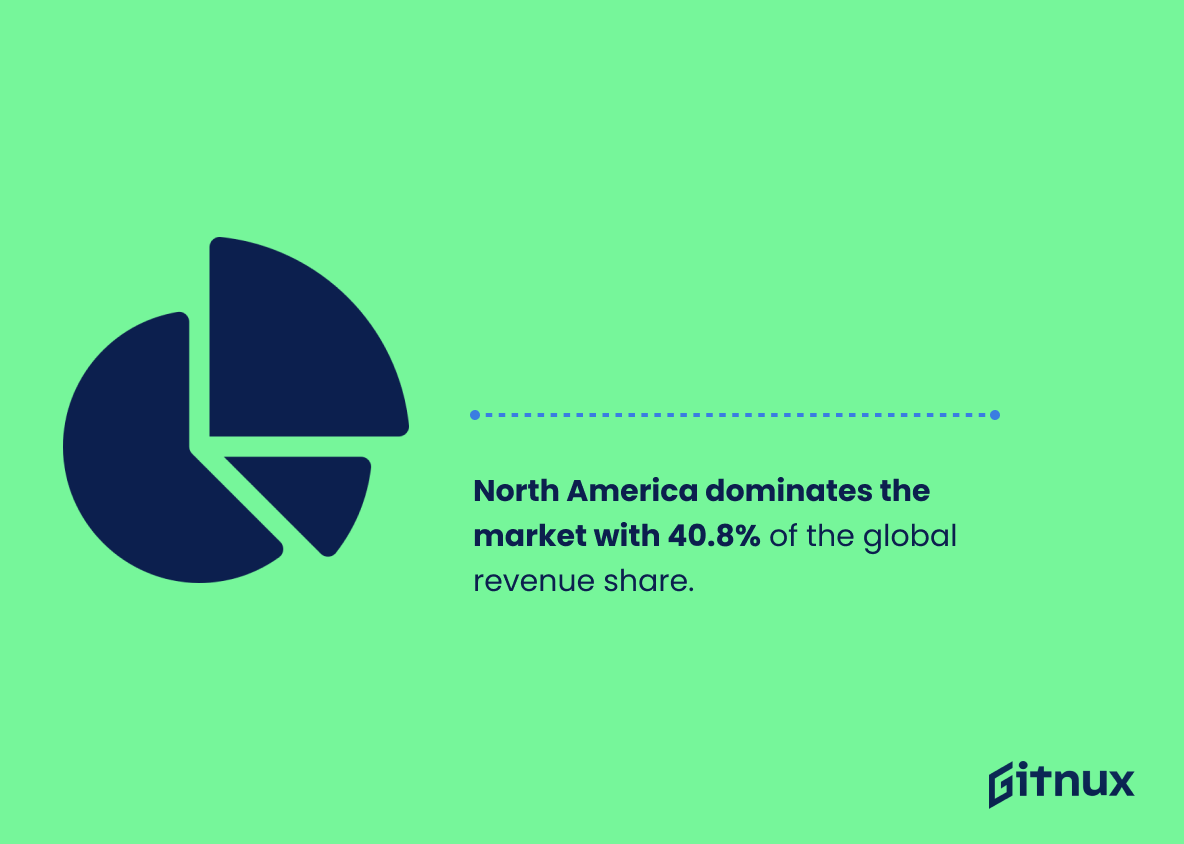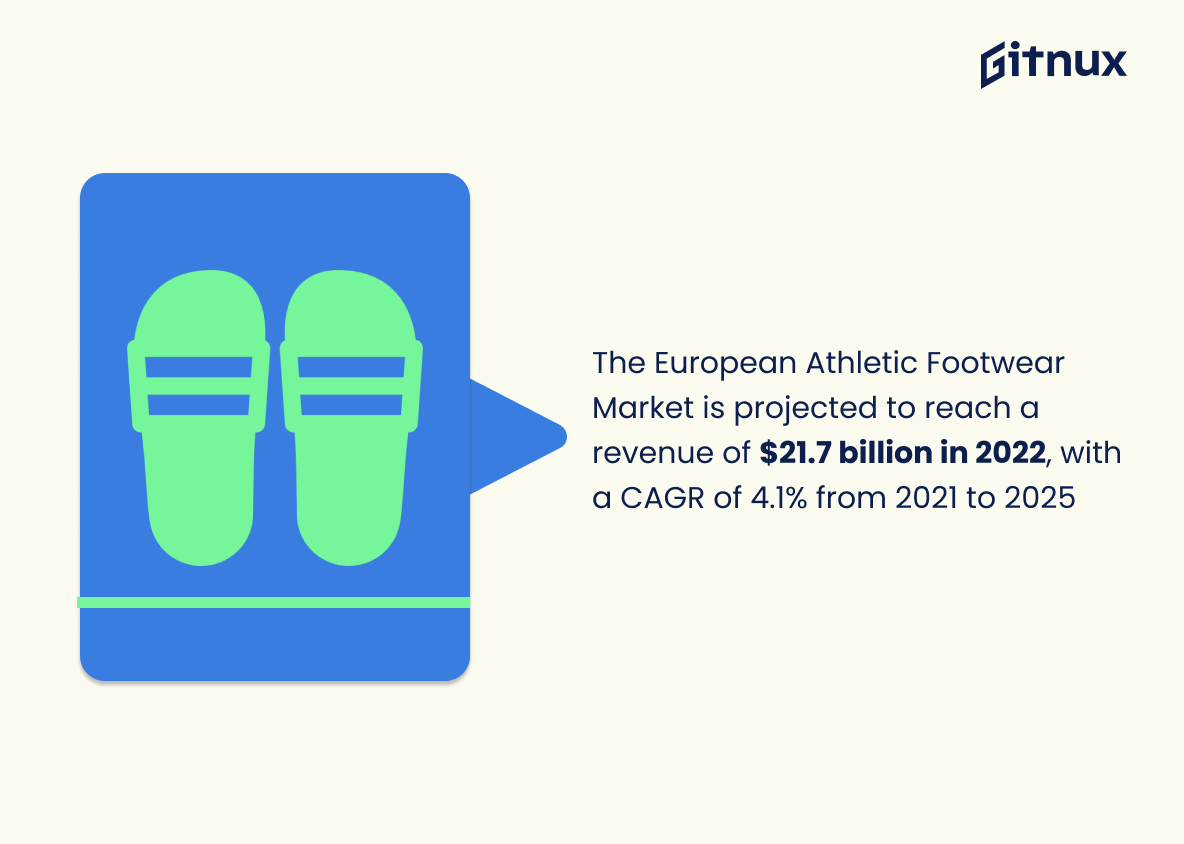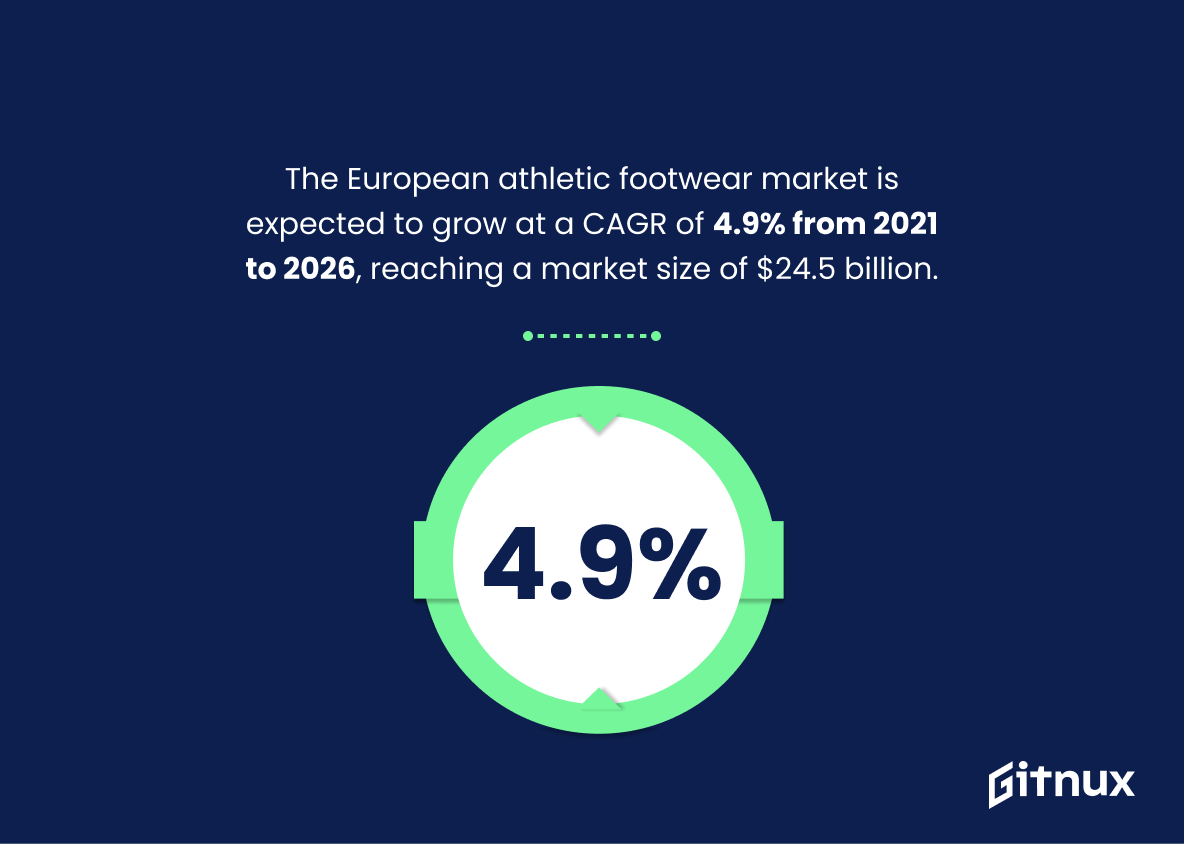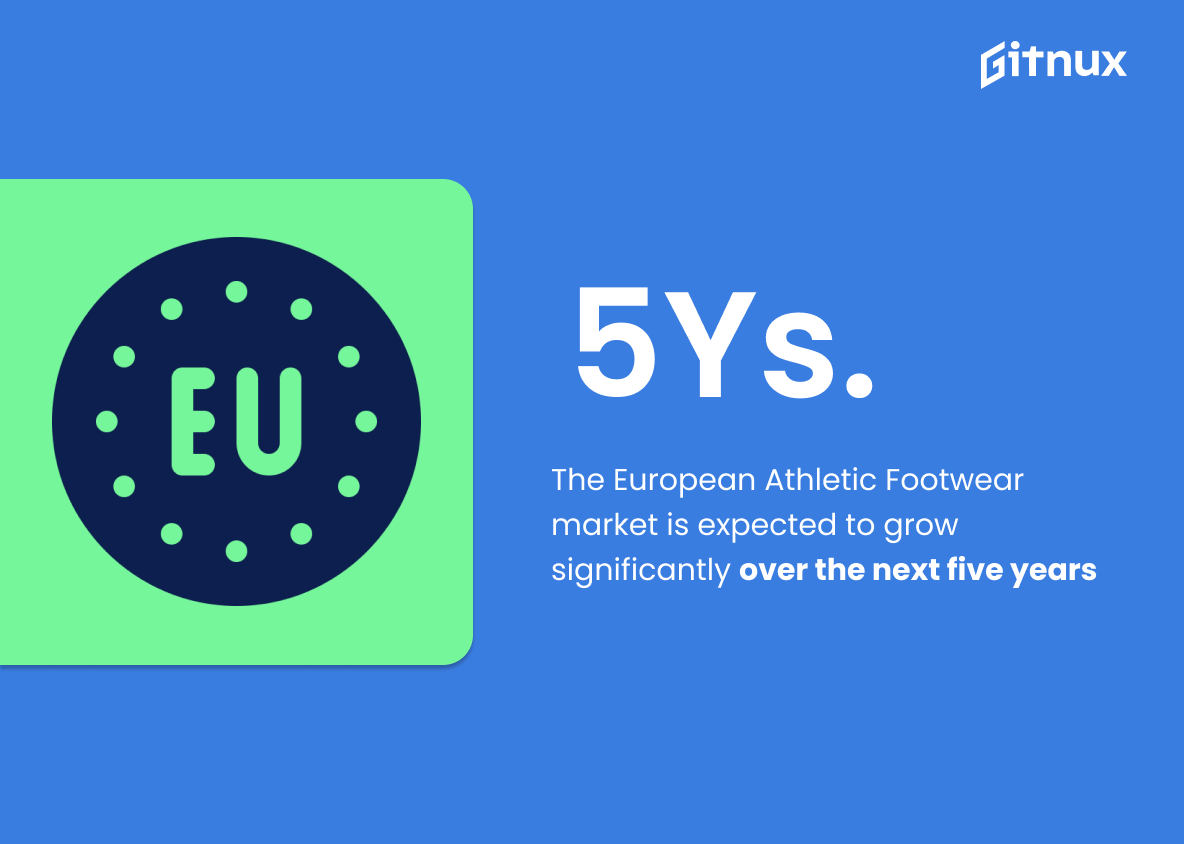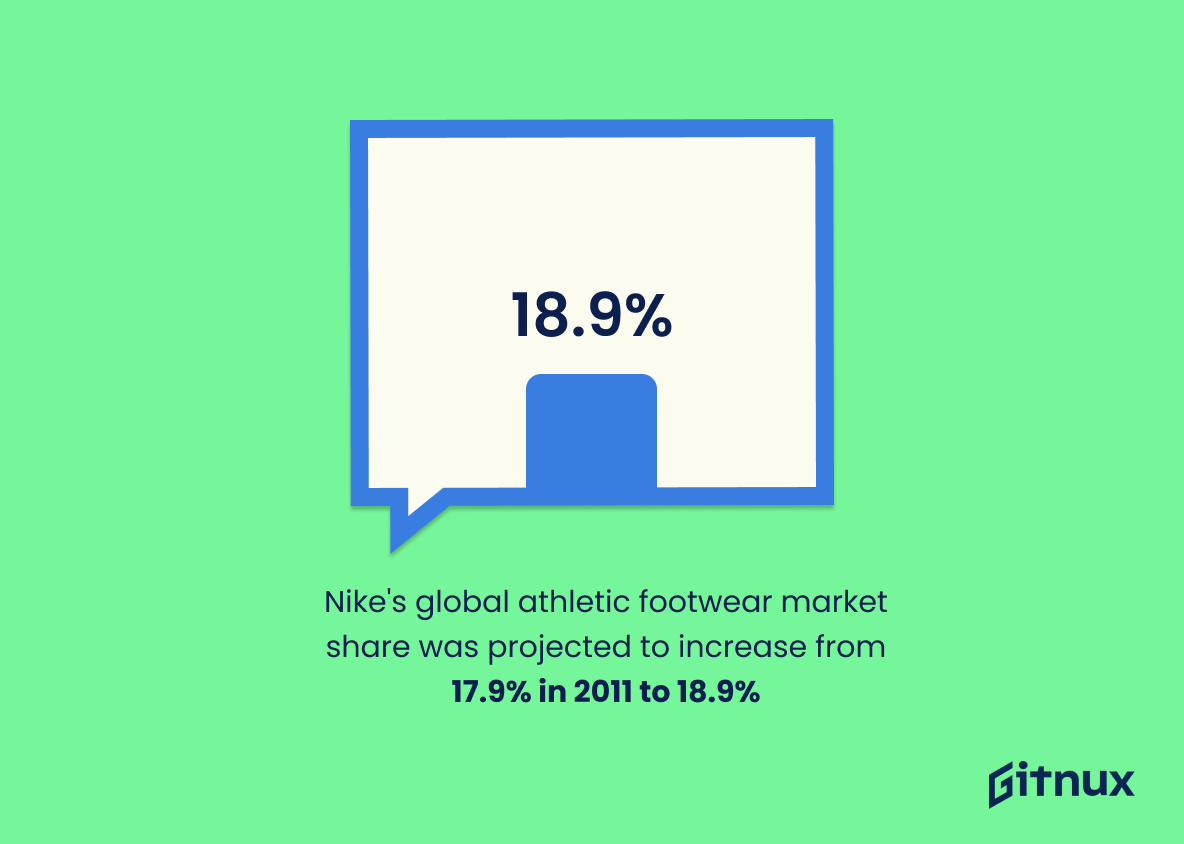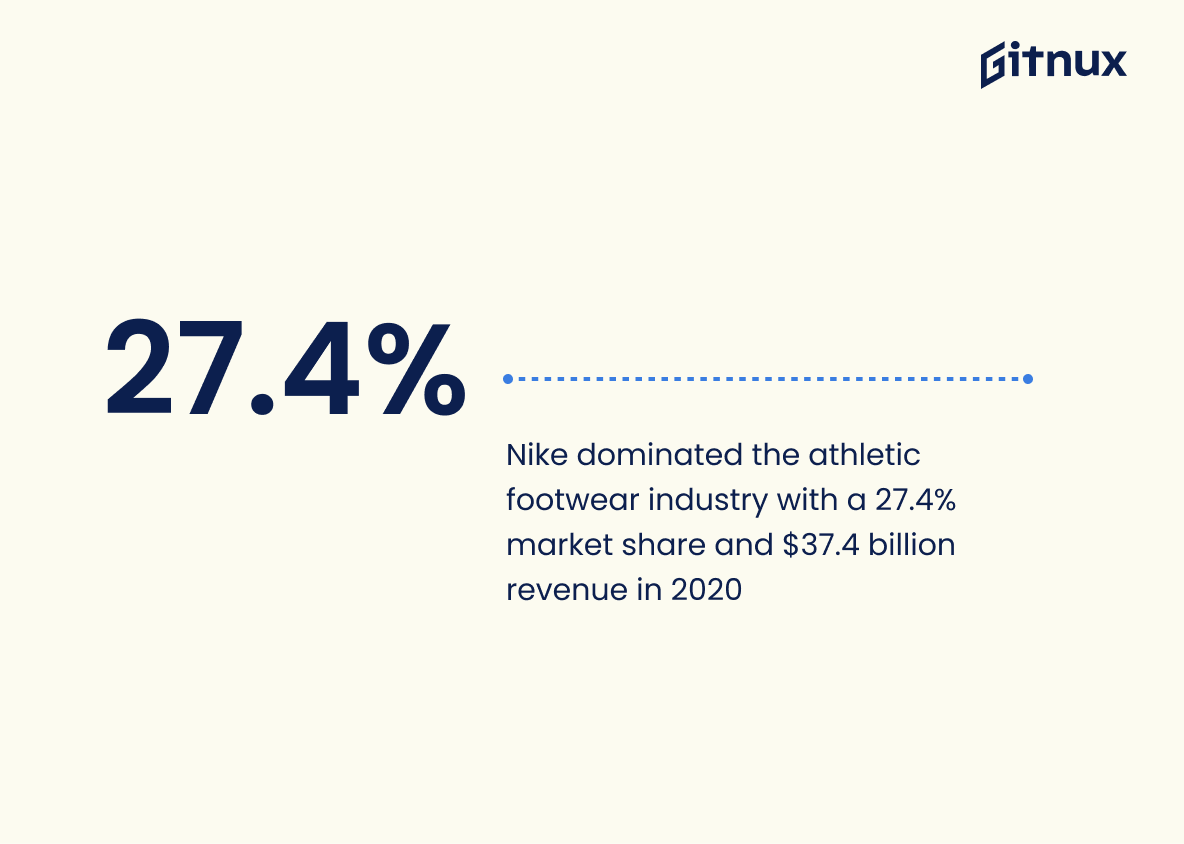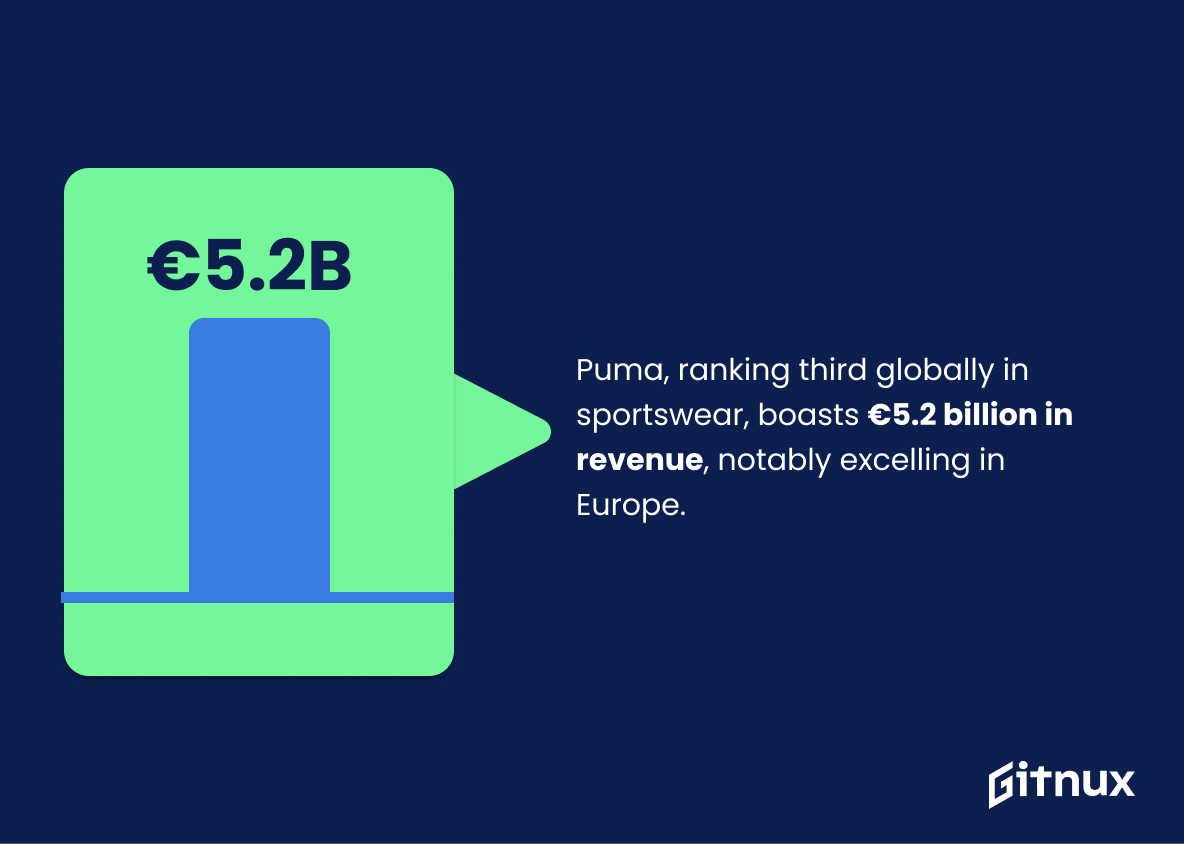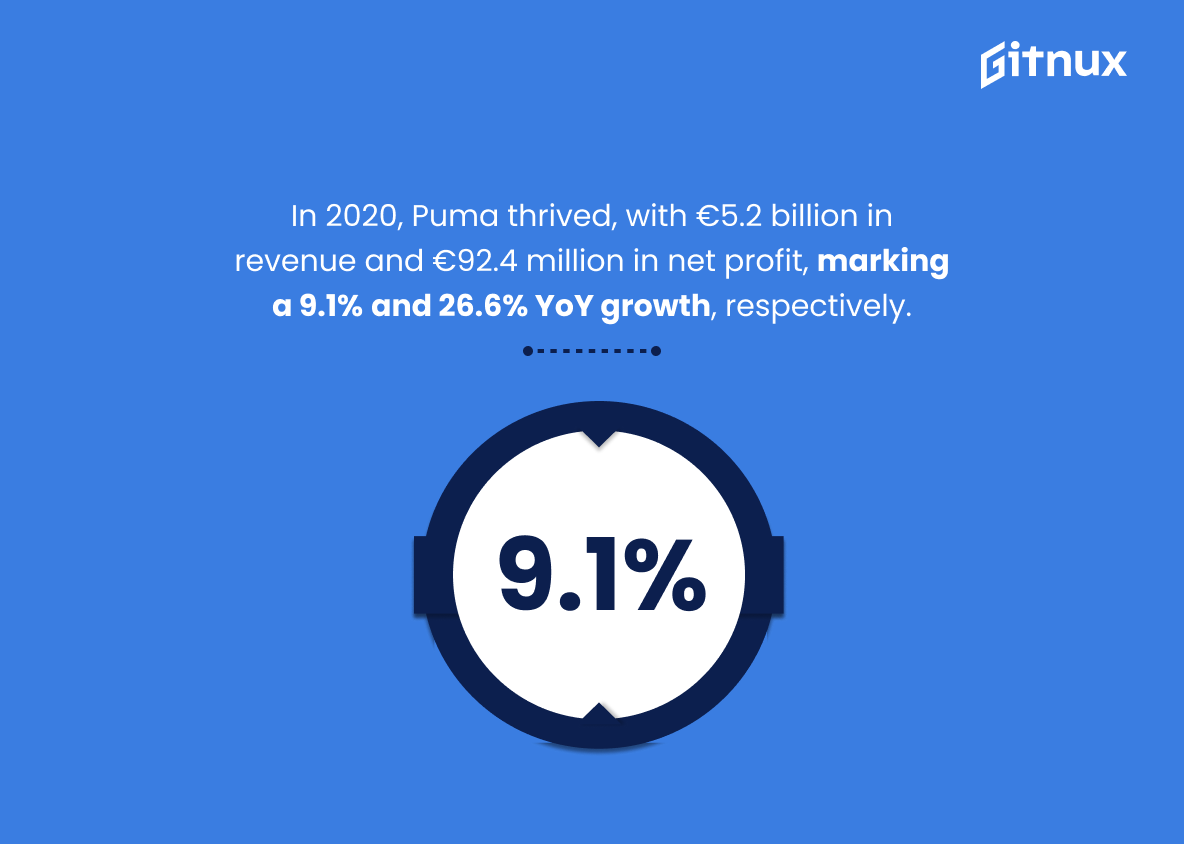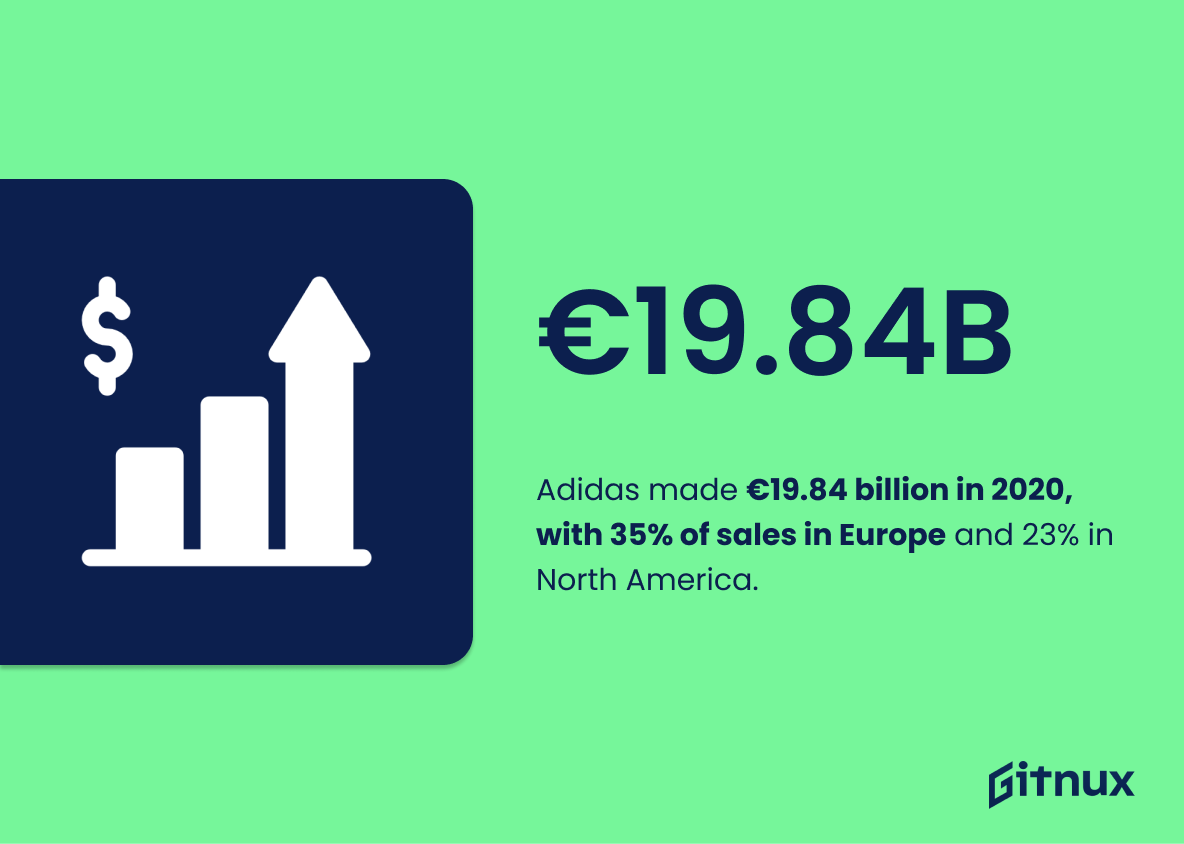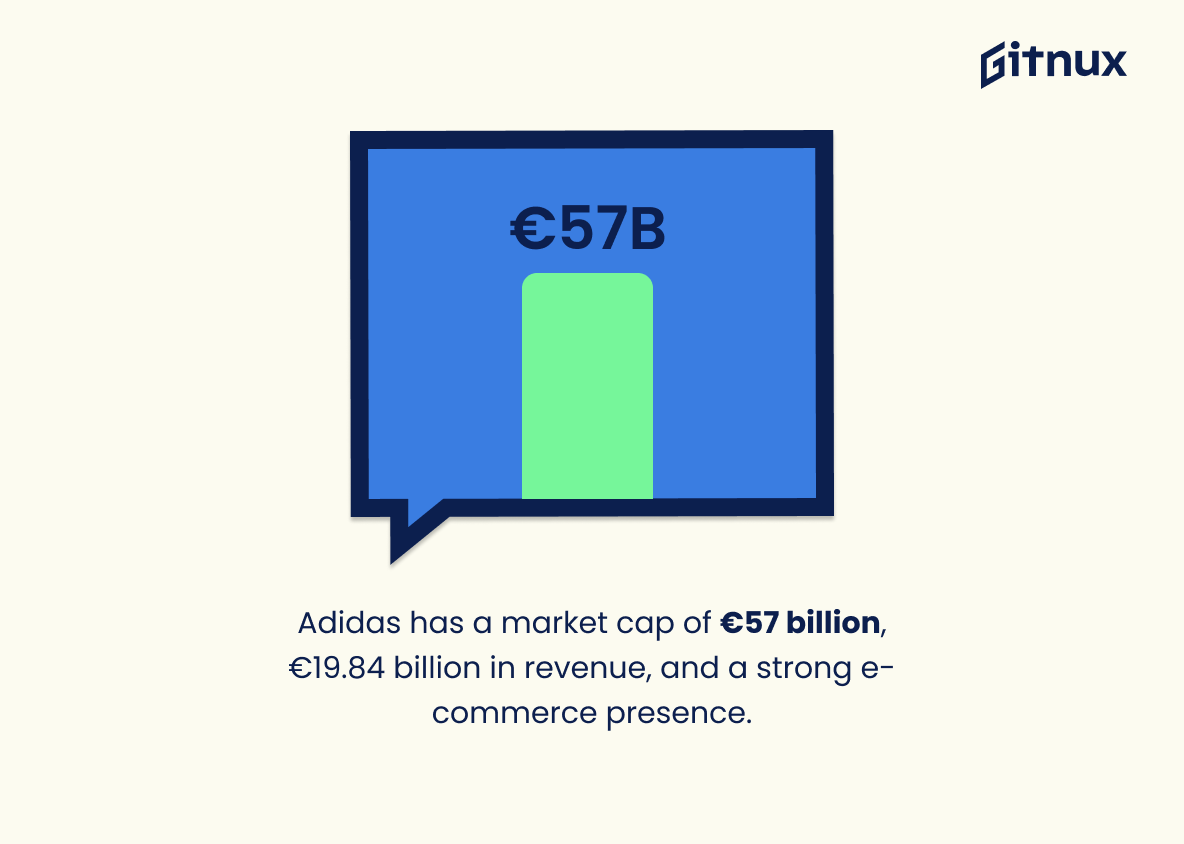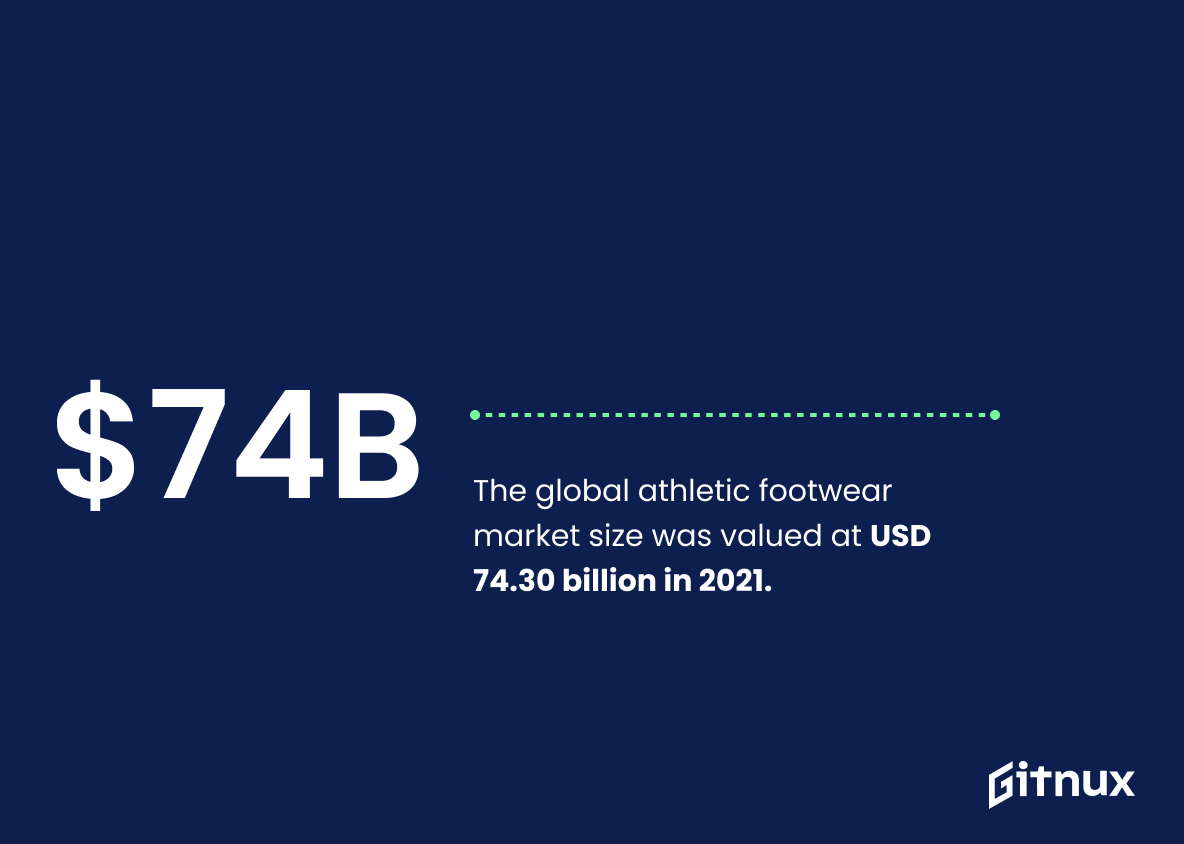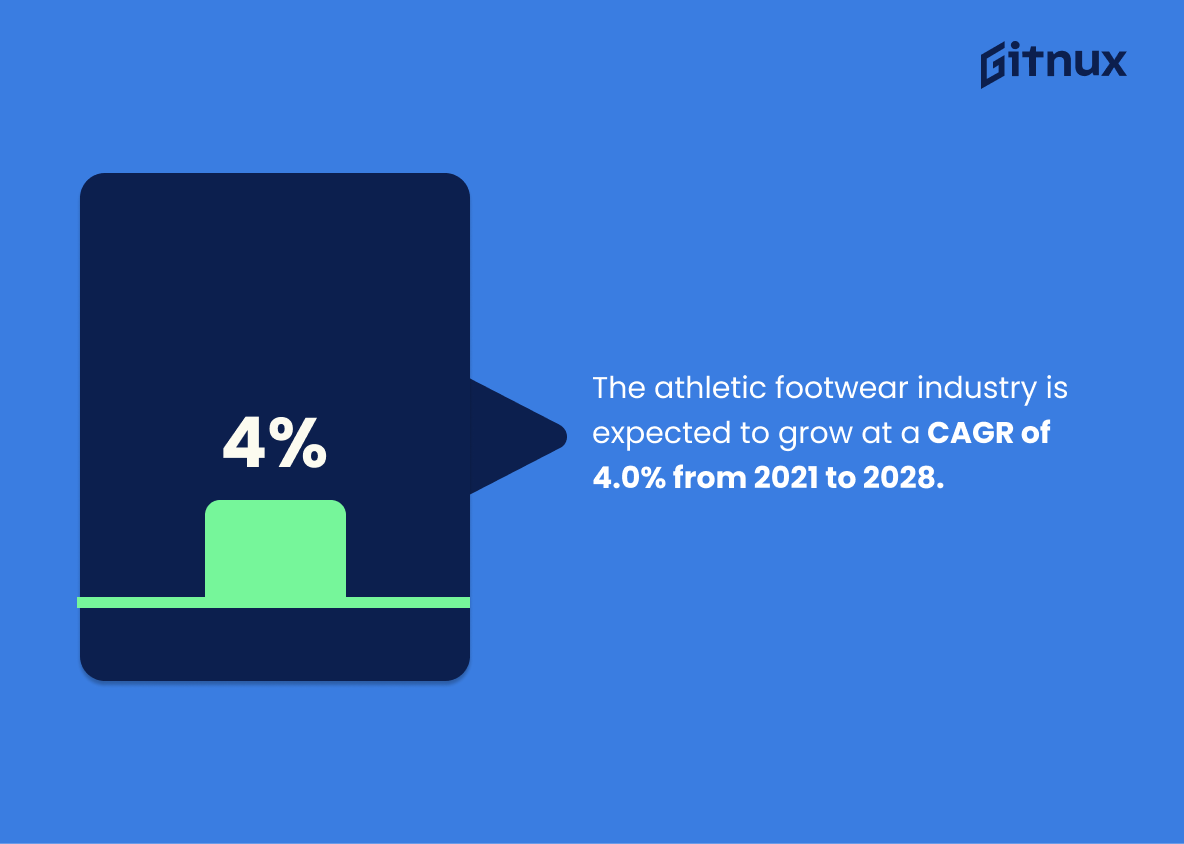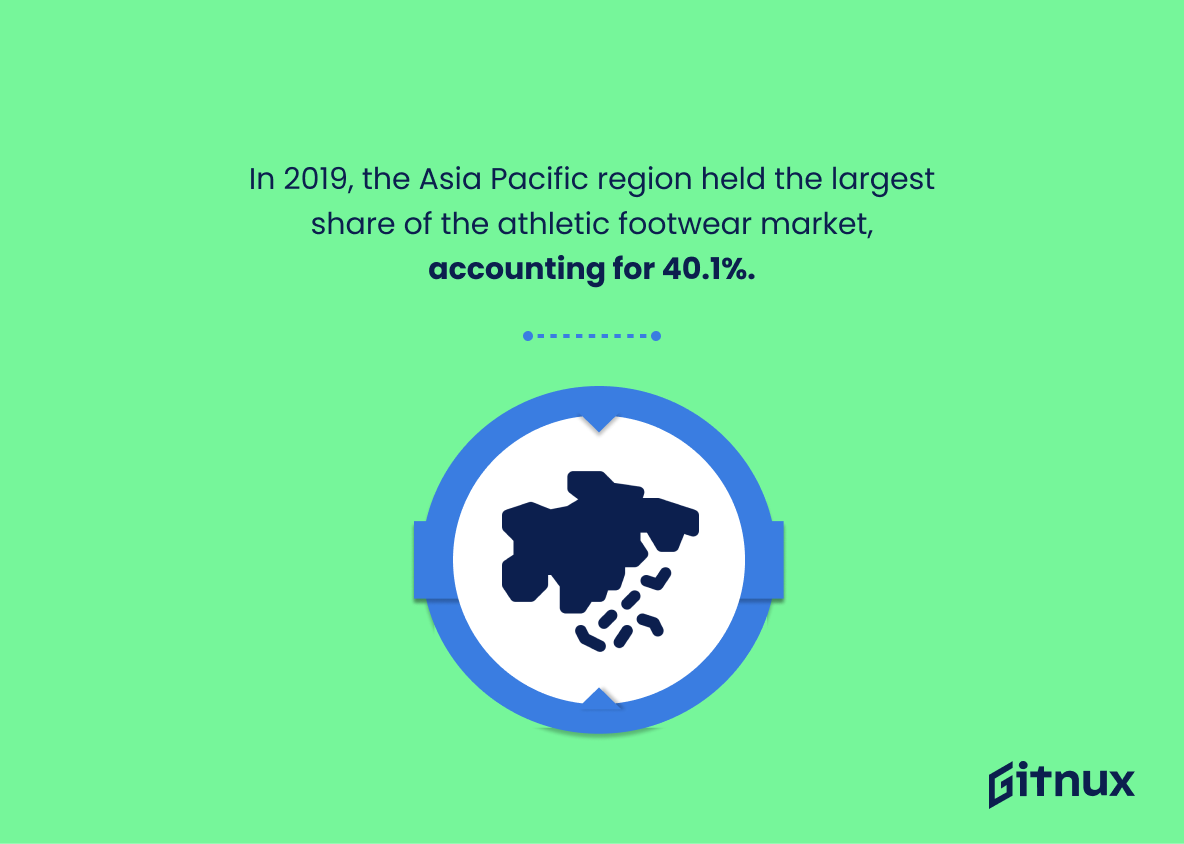Welcome to our blog post about the athletic footwear industry. In this post, we will be discussing some of the most interesting statistics about the industry. We will be looking at the size of the industry, the most popular brands, and the most popular types of shoes.
We will also discuss the trends in the industry and the impact of technology on the industry. So, if you are interested in learning more about the athletic footwear industry, then this post is for you.
Athletic Footwear Industry: The Most Important Statistics
The European athletic footwear market is expected to grow at a CAGR of 4.9% from 2021 to 2026, reaching a market size of $24.5 billion.
Nike is the clear leader in the athletic footwear industry with a 27.4% market share and $37.4 billion in revenue in 2020, thanks to its effective marketing strategy and focus on product innovation.
Athletic Footwear Industry Statistics Overview
The global athletic footwear market is projected to reach a value of $141.7 billion by 2025, with North America having the largest market share of 37.5% in 2021.
This provides an accurate picture of the current and projected size of the global athletic footwear market, as well as the expected growth rate and regional market share.
The global athletic footwear market was valued at $64.30 billion in 2017 and is expected to reach $95.14 billion by 2025, growing at a CAGR of 5.1%.
The growth is driven by the running and cross training shoes segment and is expected to be highest in the hiking and backpacking segment.
North America dominates the market with 40.8% of the global revenue share.
This is an important fact for the industry as it provides an indication of the growth of the industry and the segments that are driving it. It also highlights the geographical areas that are contributing the most to the industry’s growth.
Athletic Footwear Industry in Europe
The European Athletic Footwear Market is projected to reach a revenue of $21.7 billion in 2022, with a CAGR of 4.1% from 2021 to 2025; men’s athletic footwear accounts for 54% of the total revenue in 2021, and Nike is the leading company with a 25.6% market share in 2021.
These numbers highlight the dominance of men’s athletic footwear in the market, as well as the leading company, Nike, in terms of market share. It is essential to know for companies looking to gain insight into the industry and make informed decisions about their strategies.
The European athletic footwear market is expected to grow at a CAGR of 4.9% from 2021 to 2026, reaching a market size of $24.5 billion.
This growth is driven by the running shoes segment, which accounts for 47% of the total market share in 2020 and is dominated by Adidas, Nike, and Puma with a combined market share of 45%.
The European Athletic Footwear market is expected to grow significantly over the next five years, and that the running shoes segment is the most important segment in terms of revenue.
It also indicates that companies should focus their efforts on the running shoes segment in order to maximize their profits.
Nike’s Role in the Athletic Footwear Industry
Nike’s global market share in athletic footwear was expected to increase from 17.9% in 2011 to 18.9% in 2017. In the meantime, Adidas was expected to have a slight decline in market share and other major players like Puma and Asics were projected to maintain their market share.
Nike is the leading market shareholder in the industry and is expected to continue to grow, while other major players are expected to remain relatively stable.
Nike is the clear leader in the athletic footwear industry with a 27.4% market share and $37.4 billion in revenue in 2020, thanks to its effective marketing strategy and focus on product innovation.
It is the most successful and profitable company in the industry, and that its marketing and innovation strategies are effective in driving sales.
Puma’s Role in the Athletic Footwear Industry
Puma is the third-largest sportswear manufacturer in the world with a revenue of over €5.2 billion, particularly strong in the European market.
This brand is also a major player in the industry, and that it has a strong presence in the European market.
Puma experienced a strong year in 2020, with revenue of €5.2 billion and net profit of €92.4 million, growing 9.1% and 26.6% year-over-year respectively.
This demonstrates Puma’s success in the athletic footwear industry, with a large market capitalization and a global presence.
It also shows that this brand plays an important role in the industry, with Europe, the Americas, and Asia/Pacific accounting for 36%, 30%, and 27% of its total sales respectively.
Adidas’ Role in the Athletic Footwear Industry
Adidas generated €19.84 billion in 2020, with Europe and North America accounting for 35% and 23% of sales respectively, making it the second-largest sportswear manufacturer in the world with a 15.9% market share.
The success of Adidas in the athletic footwear industry lies in their focus on innovation and sustainability.
Adidas is a major sportswear company with a market capitalization of over €57 billion, revenue of €19.84 billion, and a strong e-commerce presence.
This confirms the company’s financial strength and ability to compete in the global market.
Supplementary Statistics
The global athletic footwear market size was valued at USD 74.30 billion in 2021.
The market size is growing rapidly, and that the industry is a lucrative one for investors and entrepreneurs alike. It also serves as a reminder of the importance of staying up-to-date with the latest industry trends and developments in order to remain competitive.
The athletic footwear industry is expected to grow at a CAGR of 4.0% from 2021 to 2028.
It is an important piece of information for anyone interested in the industry, as it can help inform decisions about investments, marketing strategies, and more. With a projected CAGR of 4.0%, the athletic footwear industry is poised to experience steady growth in the years ahead, making it an attractive option for those looking to capitalize on the industry’s potential.
In 2019, the Asia Pacific region held the largest share of the athletic footwear market, accounting for 40.1%.
It highlights the region’s importance in the industry, and serves as a reminder of the potential opportunities that exist for businesses in the area. Furthermore, it provides insight into the current trends in the industry, and can be used to inform decisions about future investments.
Running and jogging shoes accounted for the largest market share of 39.3% in 2020.
The demand for these shoes is high, and that the industry is thriving. This is great news for the industry, as it means that there is a large market for their products. It also shows that the industry is adapting to the changing needs of consumers, as running and jogging shoes are becoming increasingly popular.
In 2020, the male segment accounted for the majority share of 54.4% in the global athletic footwear market.
The male segment is the dominant force in the industry. It is essential information for anyone looking to gain a better understanding of the industry, as it provides insight into the preferences of the consumer base and the potential opportunities for growth.
The e-commerce distribution channel segment is expected to exhibit the fastest growth with a CAGR of 4.9% from 2021 to 2028.
The e-commerce distribution channel is set to experience a rapid growth in the coming years. This means that the industry can capitalize on the convenience and accessibility of online shopping to reach a wider customer base and increase their sales. Furthermore, this growth in the e-commerce segment could also lead to more innovative marketing strategies and better customer service, which could further boost the industry’s success.
In 2020, Nike held a market share of 26.7%, making it the largest player in the athletic footwear industry.
Nike has a commanding lead over its competitors, with a market share more than double that of its closest rival. This statistic is a powerful indicator of the company’s success and its ability to remain at the top of the industry.
It is expected that non-store based retailing for athletic footwear will grow at a CAGR of 7.2% during 2021-2028.
This suggests that non-store based retailing is expected to experience a steady growth over the next seven years, indicating that the industry is likely to remain a lucrative one. This is important information for anyone interested in the athletic footwear industry, as it provides insight into the potential for success in the sector.
As of 2021, the average price of athletic footwear in the United States is around $85.
This provides insight into the average cost of athletic footwear, which can be used to gauge the overall health of the industry. Additionally, it can be used to compare the prices of different brands and styles of athletic footwear, helping consumers make informed decisions when shopping for their next pair of shoes.
In 2018, approximately 64.3% of athletic footwear customers in the United States purchased shoes designed for training purposes.
The majority of customers in the United States are opting for shoes designed for training purposes, which suggests that the demand for such shoes is high. This information can be used to inform decisions about marketing strategies, product development, and other aspects of the industry.
Around 1.1 billion pairs of sports shoes were sold worldwide in 2019.
This statistic is a testament to the immense popularity of sports shoes worldwide. It speaks to the sheer size of the athletic footwear industry and its ability to capture the attention of consumers across the globe. It also highlights the potential for growth in the industry, as the demand for sports shoes continues to rise.
The sports-inspired footwear segment is expected to reach USD 21.99 billion by 2025, growing at a CAGR of 2.47%.
The industry is expected to experience steady growth over the next few years, with the sports-inspired footwear segment alone reaching USD 21.99 billion by 2025. This indicates that the industry is ripe for investment and provides a great opportunity for those looking to capitalize on the booming market.
The athletic footwear industry is projected to reach a market value of USD 102.8 billion by 2026.
The industry is expected to experience significant growth in the coming years, making it an attractive investment opportunity for those looking to capitalize on the trend. With the projected market value of USD 102.8 billion by 2026, the athletic footwear industry is poised to become a major player in the global economy.
In the United States, the footwear market generated $79.5 billion in revenues in 2020.
The industry is thriving and that it is a major contributor to the US economy. It also serves as a reminder of the importance of the industry and the impact it has on the lives of consumers.
Athletic footwear accounted for approximately 29% of the total footwear market in 2019.
The athletic footwear industry is thriving and that it is a major player in the overall footwear market. This statistic is an important indicator of the success of the industry and provides valuable insight into the current trends in the footwear market.
Sneakers and other athletic footwear sales in the United States totaled $34.53 billion in 2020.
This highlights the immense potential of the athletic footwear industry and the immense profits it can generate. It also serves as a reminder of the importance of staying up-to-date with the latest trends and developments in the industry in order to remain competitive.
In 2020, approximately 3% of athletic footwear production worldwide took place in the United States.
The US is not a major player in the global production of athletic footwear, and that the majority of production is taking place elsewhere. This is an important piece of information for anyone interested in the industry, as it provides insight into the current competitive landscape and the potential opportunities for US-based companies.
The carbon footprint of global footwear production was estimated to be around 700 million metric tons of CO2 equivalent in 2019.
The staggering statistic of 700 million metric tons of CO2 equivalent in 2019 serves as a stark reminder of the immense environmental impact of the global footwear production industry. This figure is a testament to the urgent need for the industry to take steps to reduce its carbon footprint and become more sustainable.
In 2019, China contributed to an estimated 70% of global footwear production, including athletic footwear.
This highlights the fact that the country is a major player in the global production of athletic footwear, and that its contribution is essential to the industry’s success. This statistic is a powerful reminder of the importance of China in the athletic footwear industry, and its impact on the industry’s overall growth.
About 62% of athletic footwear customers preferred to buy well-known brands in 2020.
Customers are more likely to purchase from well-known brands, which speaks to the importance of marketing and advertising for companies in this sector. This statistic is also important for understanding the competitive landscape of the industry, as it shows which brands are most successful in capturing customer loyalty.
Conclusion
In conclusion, the athletic footwear industry is a booming business, with a large and growing customer base. The industry has seen a steady increase in sales over the past few years, and the trend is expected to continue.
The industry is highly competitive, with a wide range of products and prices available to consumers. With the right strategies and marketing, companies can capitalize on the industry’s growth and success.
References
1 – https://www.statista.com/outlook/cmo/footwear/athletic-footwear/worldwide
2 – https://www.grandviewresearch.com/industry-analysis/athletic-footwear-market
3 – https://www.statista.com/outlook/cmo/footwear/athletic-footwear/europe
4 – https://www.mordorintelligence.com/industry-reports/europe-athletic-footwear-market
5 – https://www.statista.com/statistics/216821/forecast-for-nikes-global-market-share-in-athletic-footwear-until-2017/
6 – https://www.cascade.app/strategy-factory/studies/how-nike-runs-the-sportswear-game
7 – https://www.statista.com/topics/1360/puma/
8 – https://www.soocial.com/puma-statistics/
9 – https://www.statista.com/topics/1257/adidas/
10 – https://expandedramblings.com/index.php/adidas-statistics-and-facts/
11 – https://www.statista.com
12 – https://www.ibisworld.com
13 – https://www.theinfong.com
14 – https://www.grandviewresearch.com
15 – https://www.mordorintelligence.com
16 – https://www.researchandmarkets.com
17 – https://www.reportsanddata.com
18 – https://www.technavio.com
19 – https://www.worldfootwear.com
20 – https://www.fortunebusinessinsights.com
21 – https://www.qz.com
22 – https://www.prnewswire.com
